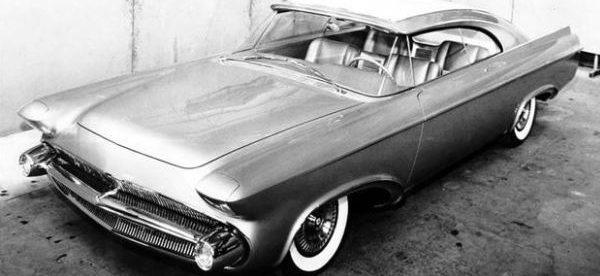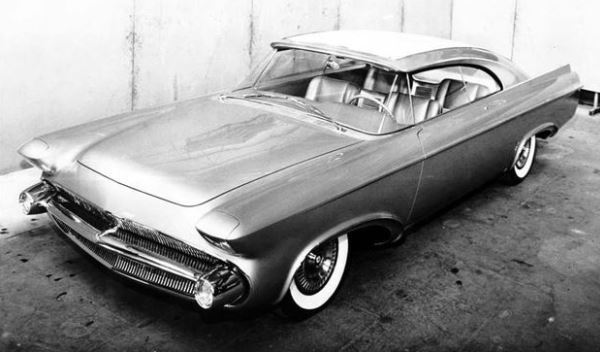The Unique Car That Went to a Unique Place


When it comes to innovations in automobile design and technology, car companies need a way to test their ideas with consumers. And it’s better if that research comes before you’ve already added these new features — if it turns out that not everyone wants a double-bubble cabin with a horn that plays La Cucaracha, you’ll bankrupt your company before you even make a sale. But on the other hand, asking people their opinions on theoretical implementations isn’t a great approach; you’re much, much better off giving consumers something tangible to react to. That’s why the “concept car” exists. Since the 1950s, car companies have created one-off vehicles that include their most outlandish ideas. These cars aren’t intended to be prototypes for mass production; rather, they’re one-of-a-kind vehicles designed simply to gather feedback from car show attendees and the like.
Pictured above is one such concept car, the Chrysler Norseman. The Norseman’s major innovation was the cantilevered roof. Chrysler set out to create a car that provided maximum visibility of the road around you from inside the vehicle. If you look closely at the image above, you’ll note that the side windows and front windshield seem to transition almost seamlessly. It’s a design feature one rarely sees even today.
Chrysler, believing that the Norseman pushed beyond the boundaries of car design at the time, kept the vehicle under tight wraps before its planned public unveiling. Despite being an American company, and despite the fact that Chrysler planned to introduce the car at a New York car show, the design and fabrication occurred in Italy — and under lock and key. One of the engineers working on the vehicle later wrote that “almost no one was ever authorized to even get near the clay studio designing this car.” As a result, few people had seen the vehicle before it left to cross the Atlantic, and similarly, few photos of it were taken at that point.
Unfortunately for car enthusiasts everywhere, the Norseman never made it to New York. Chrysler shipped it via the SS Andrea Doria, an Italian-registered cruise ship that shuttled people — and, obviously, cargo — from Italy to the United States. The ship, though, collided with another, and the Andrea Doria fell to the bottom of the ocean. Of the more than 1,600 passengers on crew aboard, only 51 died (and most of them on impact); the ship stayed afloat for eleven hours after the impact, and as Hemmings notes, that was “long enough for other ships in the area to respond to its SOS” and as a result, “all of her surviving passengers were evacuated.” But the Norseman did not make it. Like the rest of the cargo and possessions on board, passengers and crew could only save what they could carry, and no one was carrying a concept car to safety.
Every so often, divers take to the crash site in search of the property abandoned during the crash, but the dive is perilous; at least 22 scuba divers died in such attempts. There has been some moderate success in searching for the car, though. In the 1990s, one diver was able to identify the Norseman within the wreckage; he told Hemmings that “the crate had disintegrated and the car was in very, very poor condition. The ocean’s salt water invaded the Norseman’s metal and most of the car is rust, corrosion, and a heap of indistinguishable junk. The tires are still there and have assisted its identification.”
More design features about the Norseman can be found at Jalopnik, here, but unfortunately, there’s one thing we’ll never know: the colors of the car. The design notes don’t speak definitively to it, and all the photos are in black and white. Whatever colors the car was painted has been lost to history.
Bonus fact: The word “scuba” above, a while ago, would have been written “SCUBA.” That’s because it’s an acronym: it stands for “self-contained underwater breathing apparatus.” Over time, the acronym became a word in its own right, and it’s now proper to write it in all lower-case.
From the Archives: Stereotypical Concept Car: Volvo’s oddly offensive concept car.
